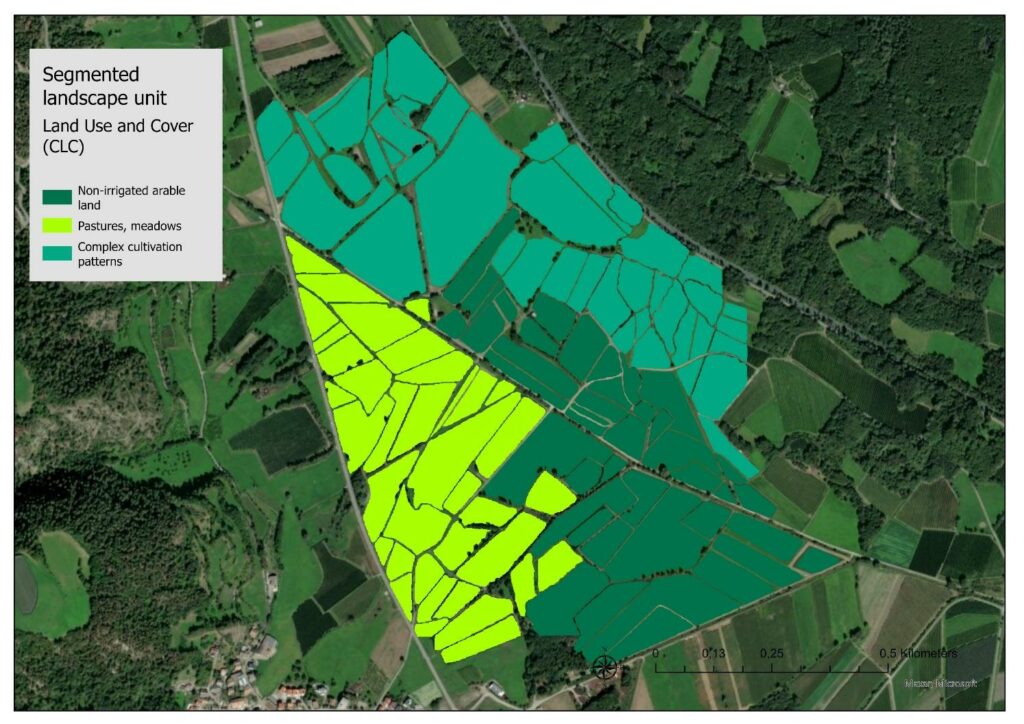LuciSun – with WP leader Jonathan Leloux – reported some relevant points about the knowledge gaps, the WP achievements during the last year, as well as the target groups addressed by the WP activities.
KNOWLEDGE GAPS
The SYMBIOSYST project on agrivoltaics aims to address several critical knowledge gaps that currently hinder the optimal integration and performance of agrivoltaic systems. One of the primary challenges is the inadequacy of existing simulation tools, which are unable to satisfactorily address the specificities of agrivoltaics. These tools fall short in accurately simulating unique irradiance patterns, complex shading, irregular terrains, and light transmittance in greenhouses. Moreover, there is no comprehensive tool available that allows for the joint simulation of photovoltaic (PV) yield and crop growth, highlighting the need for a more holistic approach.
Another significant gap lies in landscape integration. The design of agrivoltaic systems often does not explicitly consider landscape features, leading to installations that lack harmony with their environment. This is compounded by a lack of a common language among different stakeholders, which hampers effective communication and integration. Additionally, during the early design stages, classic PV simulation tools do not account for crop-specific needs, resulting in suboptimal planning and design processes. The current serial nature of the modelling chain is also time-consuming, preventing the attainment of optimal solutions.
Topographical surveys present another challenge. While aerial topographical mapping and 3D models are tailored for commercial-scale PV installations, they do not incorporate the specific requirements of agrivoltaics. Detailed PV simulations also face limitations, as existing PV yield simulation software struggles to efficiently manage the complex needs of agrivoltaic systems. This includes handling bifacial PV modules and their associated irradiance contributions. Furthermore, standard ray tracing engines lack spectrally resolved simulations necessary for accurate optical effect estimation.
In terms of long-term yield predictions, the common practice of assuming a constant degradation rate fails to account for varying operating conditions. In agrivoltaic environments, particularly within greenhouses, micro-climate conditions significantly influence performance and degradation rates. This oversight leads to inaccurate lifetime energy yield predictions. Crop modelling is another area requiring attention. The interaction between crop genetics, environment, and management under agrivoltaic conditions needs detailed modelling to understand its impact on plant growth and fruit quality. Current models do not adequately address how photosynthesis and evapotranspiration processes are modified in agrivoltaic systems.
By addressing these knowledge gaps, SYMBIOSYST seeks to develop comprehensive tools and methodologies that optimize both PV energy yield and crop growth, ensuring the sustainable and efficient integration of agrivoltaic systems into diverse landscapes.
A GIS-based tool was developed for landscape integration, and aerial agri-topography techniques were enhanced for detailed mapping. A macro vision mapping tool optimized agri-PV system configurations across Europe. Crop yield and quality models were created for pome fruit and tomato greenhouses. A 3D light transmittance and reflectance modeling tool was developed, alongside spectrally resolved ray-tracing and semi-transparency models. Early planning and optimization tools now provide insights into the trade-offs between PV and crop yields, improving decision-making for agrivoltaic projects.
RELEVANT ACHIEVEMENTS
The achievements from the first year of the SYMBIOSYST project significantly contribute to its advancement by laying a solid foundation for subsequent development and optimization phases. The GIS-based tool for landscape integration and the enhanced aerial agri-topography techniques are crucial for accurate planning and design, enabling project developers to seamlessly integrate agrivoltaic systems into diverse landscapes.
The macro vision mapping tool, which optimizes agri-PV system configurations, will be particularly valuable for policymakers and regional planners. Crop yield and quality models provide essential data for agricultural stakeholders to enhance crop production under agrivoltaic conditions.
The 3D light transmittance and reflectance modeling tool, along with spectrally resolved ray-tracing and semi-transparency models, are instrumental for technical teams to refine the efficiency of PV systems while ensuring optimal light distribution for crops.
Early planning and optimization tools, providing insights into the trade-offs between PV and crop yields, will be used by all partners, including EURAC, LUCISUN, and IMEC, to improve decision-making and project planning. These tools ensure that future agrivoltaic projects are designed with a comprehensive understanding of both energy and agricultural outputs, advancing the project’s goals of sustainable integration and efficiency.
Under WP2, ENEA, EURAC Research, Above and TU Delft worked on Deliverable 2.1 Tools and specifications for modelling agri-PV landscape integration. Download the document.
ADDRESSED TARGET GROUPS
The SYMBIOSYST project addresses several key types of knowledge on agrivoltaics, targeting different groups involved in the development and implementation of agrivoltaic systems. For policymakers, regional planners, and project developers, the project has developed a GIS-based tool and aerial agri-topography techniques to facilitate the seamless integration of agrivoltaic systems into diverse landscapes, optimizing land use while considering landscape features. Engineers, technical teams, and PV system designers will benefit from the creation of a macro vision mapping tool for optimal agri-PV system configurations and 3D modeling tools to evaluate light transmittance, reflectance, and blockage. These advancements support the design of efficient PV systems that also promote optimal crop growth. Agricultural stakeholders, including farmers and agronomists, will gain insights from models that understand the dependencies of crop yield and quality on PV system parameters, focusing on how agrivoltaic conditions affect crop production, specifically for pome fruits and tomatoes. Project planners and decision-makers will use tools for early technical planning and optimization of agrivoltaic projects, offering high-level information on the trade-offs between PV energy yield and crop yields. These tools aid in making informed decisions that balance energy production with agricultural productivity, contributing to a holistic understanding and sustainable development of agrivoltaic systems.

